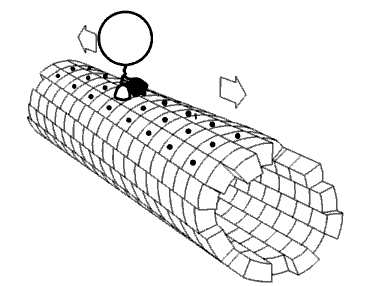
Photo from academic.microsoft.com
ABSTRACT Two new thiourea (1) and urea (2) derivatives, substituted with 2-trifluoromethyl-4H-chromen-3-yl moieties at defined positions, were obtained by convenient synthetic methodologies. The pure compounds were studied in solid state… Click to show full abstract
ABSTRACT Two new thiourea (1) and urea (2) derivatives, substituted with 2-trifluoromethyl-4H-chromen-3-yl moieties at defined positions, were obtained by convenient synthetic methodologies. The pure compounds were studied in solid state by vibrational spectroscopy (FT-IR and Raman) and in solution by NMR and UV–Vis spectroscopy. The crystal structure of the urea derivative (compound 2) was also determined by X-ray diffraction. The crystal packing is governed by N–H···O intramolecular interactions of moderate strength in a self-assembled dimer of the terminal amide fragment (C(=O)–NH2). Hirshfeld surface and 2D-fingerprint plots were also performed to characterise the role in the packing stabilisation of all contacts, including weak C–H···F hydrogen bonds and π–π stacking interactions. For both compounds, the tentative assignment of vibrational and electronic spectra was assisted by theoretical calculations. Besides, to evaluate the influence on the pharmacokinetic and pharmacodynamic properties of molecules with –CF3 groups, the anti-microbial activity of the title compounds was tested against the standard strains of various Gram-positive and Gram-negative organisms with noteworthy antimicrobial effect over Staphylococcus aureus, Klebsiella pneumoniae and Salmonella typhi. GRAPHICAL ABSTRACT
Journal Title: Molecular Physics
Year Published: 2019
Link to full text (if available)
Share on Social Media: Sign Up to like & get
recommendations!